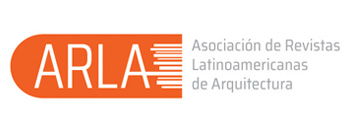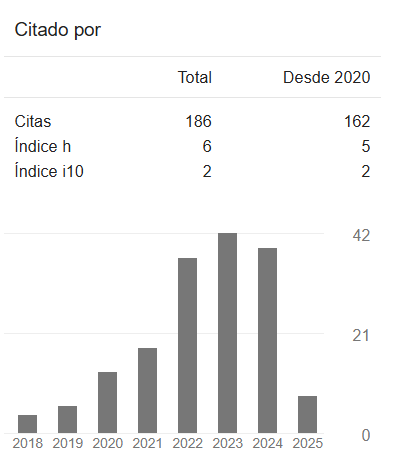Haussmannización en los trópicos
Urbanismo abyecto y violencia infraestructural en la Nicaragua urbana
DOI:
https://doi.org/10.35305/23626097v12i22.521Descargas
Métricas
Citas
Babb, F. E. (1999). ‘Managua is Nicaragua’: The Making of a Neoliberal City. City & Society, 11(1/2), 27-48.
Báez Cortés, J. F. (2006). The problem isn’t lack of resources; it’s fiscal inequity and legalized pillage. Envío in English, 296. Disponible en: http://www.envio.org.ni/articulo/3224.
Benjamin, W. (1999). The Arcades Project. Cambridge, Estados Unidos: Harvard University Press.
Bennett, J. (2005). The Agency of Assemblages and the North American Blackout. Public Culture, 17(3), 445-66.
Berman, M. (1982). All that is Solid Melts into the Air: The Experience of Modernity. Nueva York, Estados Unidos: Penguin.
Chamorro, C. F. (2002). Edifico Pellas fue exonerado de 15% IGV. Confidencial, 288. Disponible en: http://www.confidencial.com.ni/2002-288/deportada1-288.html.
Christiansen, R. (1994). Paris, Babylon: The Story of the Paris Commune. Nueva York, Estados Unidos: Penguin.
Duffy, L. (2005). Le Grand Transit Moderne: Mobility, Modernity and French Naturalist Fiction. Amsterdam, Holanda: Rodopi B. V.
Elias, N. (2000). The Civilizing Process. Oxford, Reino Unido: Blackwell.
Ferguson, J. (1999). Expectations of Modernity: Myths and Meanings of Urban Life on the Zambian Copperbelt. Berkeley, Estados Unidos: University of California Press.
Freeman, J. (2010). From the little tree, half a block toward the lake: Popular geography and symbolic discontent in post-Sandinista Managua. Antipode, 42(2), 336-73.
Graham, S. (2006). Urban metabolism as target: Contemporary war as forced demodernization. En N. Heynen, M. Kaika, y E. Swyngedouw (eds.), In the Nature of Cities: Urban Political Ecology and the Politics of Urban Metabolism (pp 245-65). Londres, Reino Unido: Routledge.
Graham, S. (2010). Disrupted Cities: When Infrastructure Fails. Londres, Reino Unido: Routledge.
Hannerz, U. (1980). Exploring the City: Inquiries toward an Urban Anthropology. Nueva York, USA: Columbia University Press.
Harvey, D. (2003). Paris: Capital of Modernity. London, UK: Routledge.
Harvey, D. (2006). The political economy of public space. En S. M. Low y N. Smith (eds.), The Politics of Public Space (pp 17–34). Londres, Reino Unido: Routledge.
Haussmann, G.-E. (2000). Mémoires. Paris, Francia: Seuil.
Herbst, J. (2000). State and Power in Africa: Comparative Lessons in Authority and Control. Princeton, Estados Unidos: Princeton University Press.
Jordan, D. P. (1995). Transforming Paris: The Life and Labors of Baron Haussmann. Nueva York, Estados Unidos: The Free Press.
Katz, C. (2007). Banal terrorism: Spatial fetishism and everyday insecurity. En D. Gregory y A. Pred (eds), Violent Geographies: Fear, Terror and Political Violence (pp. 349-61). Nueva York, Estados Unidos: Routledge.
Leonardi, R. (2001). Nicaragua Handbook. Bath, UK: Footprint Handbooks.
Mann M. (1984). The autonomous power of the state: its origins, mechanisms and results. Archives Européenes de Sociologie, 25, 185-213.
Mann, M. (2008). Infrastructural power revisited. Studies in Comparative International Development, 43(3-4), 355-65.
McFarlane, C., y J. Rutherford. (2008). Political infrastructures: Governing and experiencing the fabric of the city. International Journal of Urban and Regional Research, 32(2), 363–74.
Merrifield, A. (2002). Metromarxism: A Marxist Tale of the City. Nueva York, Estados Unidos: Routledge.
Pinkney, D. (1958). Napoleon III and the Rebuilding of Paris. Princeton, Estados Unidos: Princeton University Press.
Rice, S. (1997). Parisian Views. Cambridge, USA: The MIT Press.
Rodgers, D. (2004). Disembedding the city: Crime, insecurity, and spatial organisation in Managua, Nicaragua. Environment and Urbanization, 16(2), 113-24.
Rodgers, D. (2008a). A symptom called Managua. New Left Review, 49, 103-20.
Rodgers, D. (2008b). Searching for the time of beautiful madness: Of ruins and revolution in post-Sandinista Nicaragua. En H. West y P. Raman (eds.), Enduring Socialism: Explorations of Revolution and Transformation, Restoration and Continuation (pp. 77-102). Oxford, Reino Unido: Berghahn Books.
Rodgers, D. (2011). An illness called Managua: Urbanisation and ‘mal-development’ in Nicaragua. En T. Edensor & M. Jayne (eds.), A World of Cities: Urban Theory beyond the West. Londres, Reino Unido: Routledge.
Scheper-Hughes, N., y P. Bourgois. (2004). Introduction: Making Sense of Violence. En N. Scheper-Hughes y P. Bourgois (eds.), Violence in War and Peace: An Anthology (pp. 1-27). Oxford, Reino Unido: Blackwell.
Scott, J. (1998). Seeing Like a State: How Certain Schemes to Improve the Human Condition Have Failed. New Haven, USA: Yale University Press.
Star, S. L. (1999). The ethnography of infrastructure. American Behavioral Scientist, 43(3), 377-91.
Wall, D. L. (1996). City profile: Managua. Cities, 13(1), 45-52.
Whisnant, D. E. (1995). Rascally Signs in Sacred Places: The Politics of Culture in Nicaragua. Chapel Hill, USA: University of North Carolina Press.
Wirth, L. (1938). Urbanism as a Way of Life. American Journal of Sociology, 44(1), 1-24.

Publicado
Cómo citar
Número
Sección
Licencia
Derechos de autor 2025 A&P Continuidad

Esta obra está bajo una licencia internacional Creative Commons Atribución-NoComercial-CompartirIgual 4.0.
Política de acceso abierto
A&P Continuidad es una publicación de acceso abierto y sin ánimo de lucro. A partir de la Declaración de México la revista se distribuye bajo una Licencia Creative Commons CC BY-NC-SA de Atribución – NoComercial - CompartirIgual 4.0 Internacional: “No se permite un uso comercial de la obra original ni de las posibles obras derivadas, la distribución de las cuales se debe hacer con una licencia igual a la que regula la obra original. Esta licencia no es una licencia libre."
A&P Continuidad autoriza la reproducción parcial o total de los textos y gráficos siempre que se cite la procedencia. Los criterios expuestos en los artículos son de exclusiva responsabilidad de sus autores y no reflejan necesariamente la opinión del Comité Editorial ni de la Dirección. Los derechos de los artículos publicados pertenecen a sus autores o editoriales.
Cesión de derechos
La aceptación de un artículo para ser publicado implica la transferencia de derechos del autor a la revista. Los autores conservan el derecho de usar el material en libros o publicaciones futuras y de aprobar o vetar la republicación de su trabajo, así como los derechos derivados de patentes u otros. El formulario de cesión de derechos puede descargarse aquí.





























 Esta obra está bajo una
Esta obra está bajo una 

